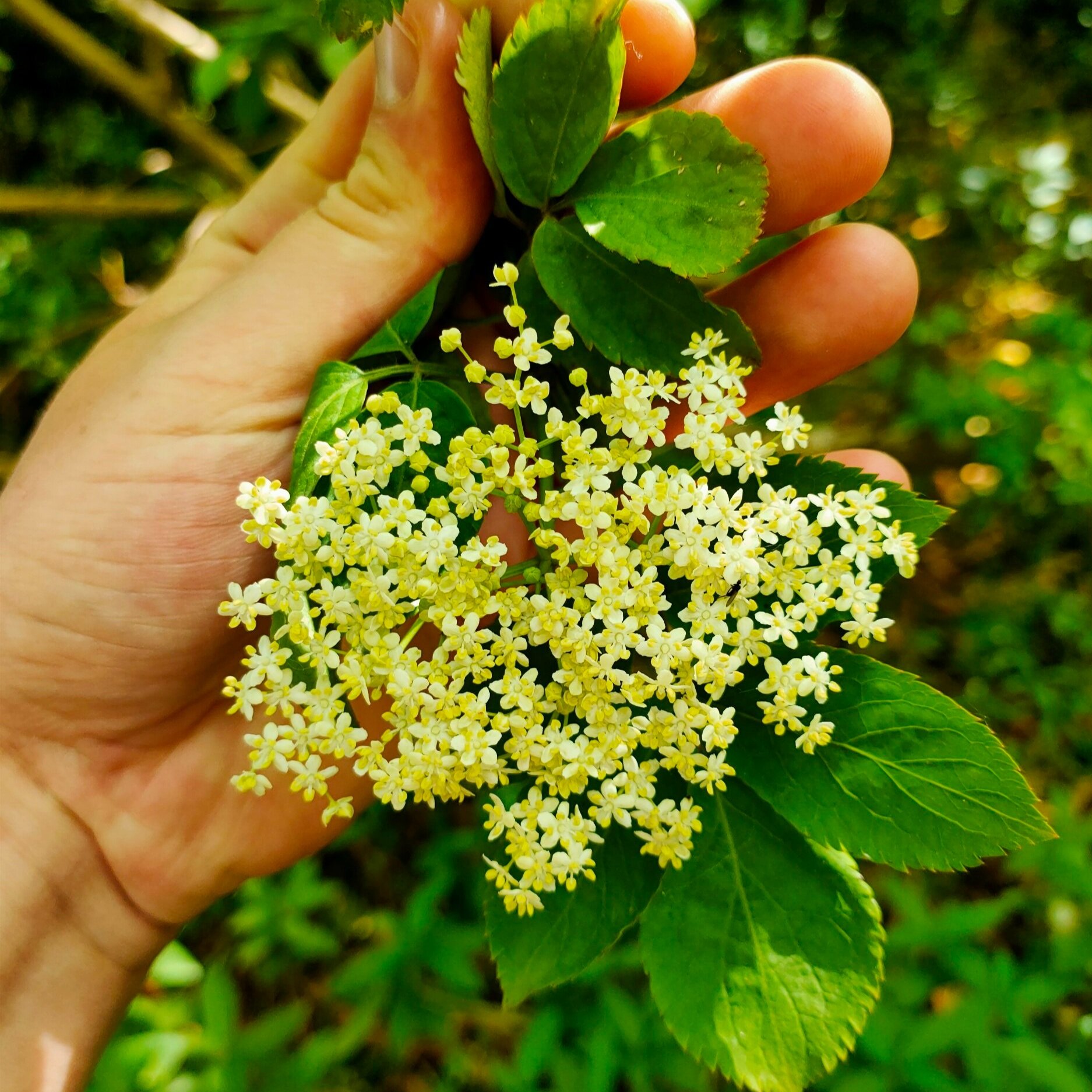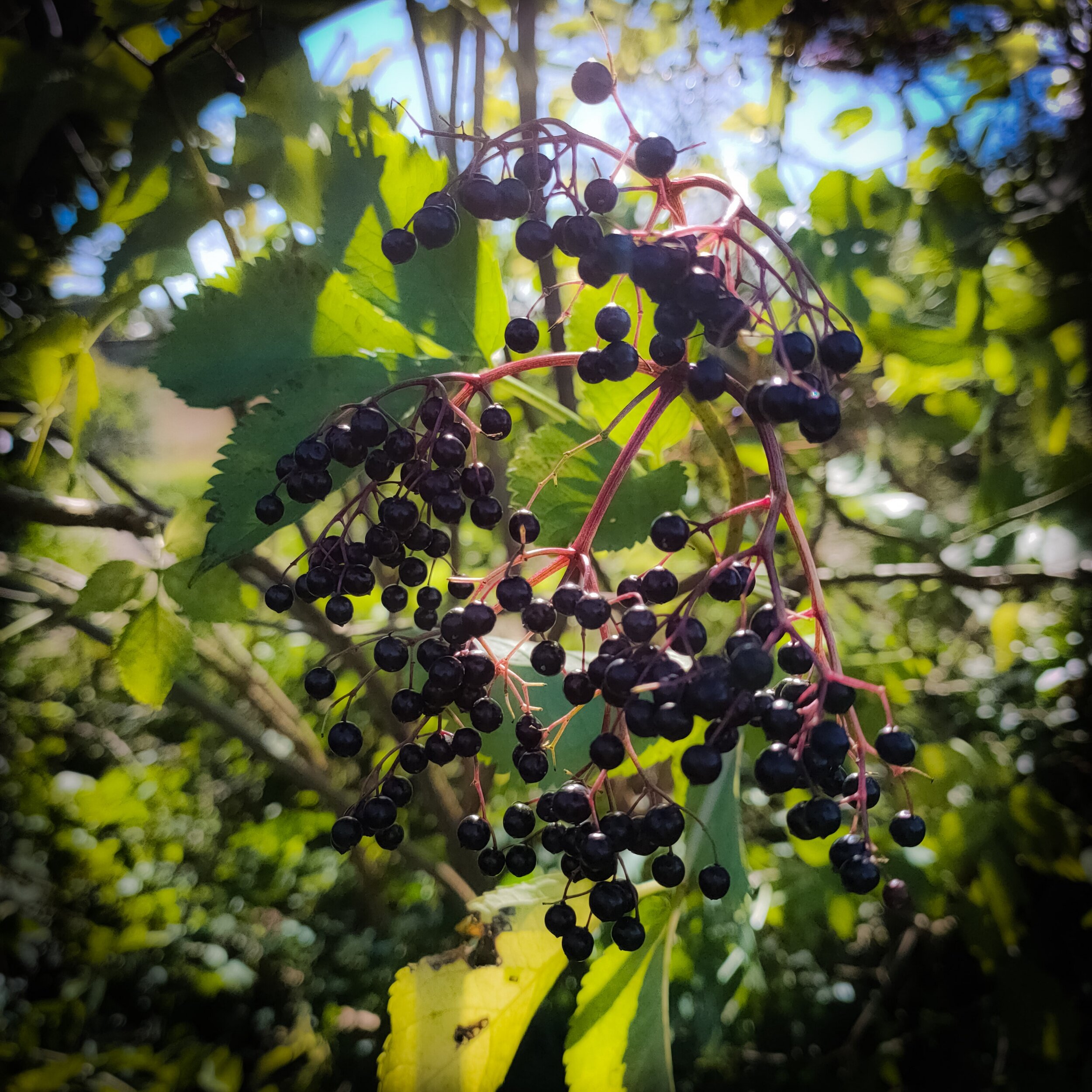Elder Tree
How To ID Me And What I’m Good For?
My ID Features:
Flowers
Leaves & flower
Bark
Berries
Leaves
Elder
Latin Name - Sambucus nigra.
Common Names - Elder, Elderberry, Black Elder, European Elder, European Elderberry, European Black Elderberry, Tramman.
Family - Adoxaceae.
Season - Flowers (May-July) & Berries (late summer)
Edible bits - Flowers & berries
Habitat - Practically anywhere. Woodland and hedgerows in particular.
Possible Confusion - Wayfaring tree [viburnum lantana] looks quite similar in flower, but easily cast aside after looking at the leaf difference. The fruit of wayfaring is mildly toxic and may cause vomiting and diarrhoea if consumed in large quantities. It could also potentially be mistaken for Rowan [Sorbus aucuparia], but easily set apart by the bark of the tree. Rowan berries are also edible after cooking.
Description - We don’t think this tree needs much introduction as it’s well known amongst everyone. There are some points worth making though. Elder berries shouldn’t be consumed raw as they contain cyanogenic glycoside which can be harmful in high dosage. This is remedied by cooking at above 27c as this releases any harmful nasties. The flowers however are safe to infuse with cold liquids etc. All other parts of the tree are not considered edible due to toxicity (bark, leaves). It’s good practice to remove as much of anything other than flower or fruit before using for culinary purposes.
Physical Characteristics - Elder is a deciduous shrub or small tree growing to around 6 metres tall. The bark is light gray when young and changes to a coarse gray with age. The leaves are arranged in opposite pairs, 10–30 centimetres long, pinnate with five to seven leaflets, the leaflets 5–12 cm long with a serrated edge. The young stems are hollow.
The flowers have five stamens, which are borne in large, flat umbels 10–25 cm in diameter. The individual flowers are ivory white, 5–6 millimetres in diameter, with five petals.
The fruit is a glossy, dark purple to black berry 3–5 mm diameter, produced in drooping clusters in late autumn.
Medicinal Qualities - Elderflower has shown to be antioxidant, anti-inflammatory and anti-bacterial. Studies have shown elderflower extract was effective fighting against pathogens. Giving evidence to claims given historically for its medicinal uses.
Harvesting Sustainability - Being such an abundant tree in the UK you’re unlikely to do any damage. Harvest a small amount from each tree.
Never munch on a hunch! Volf takes no responsibility for anything consumed.









